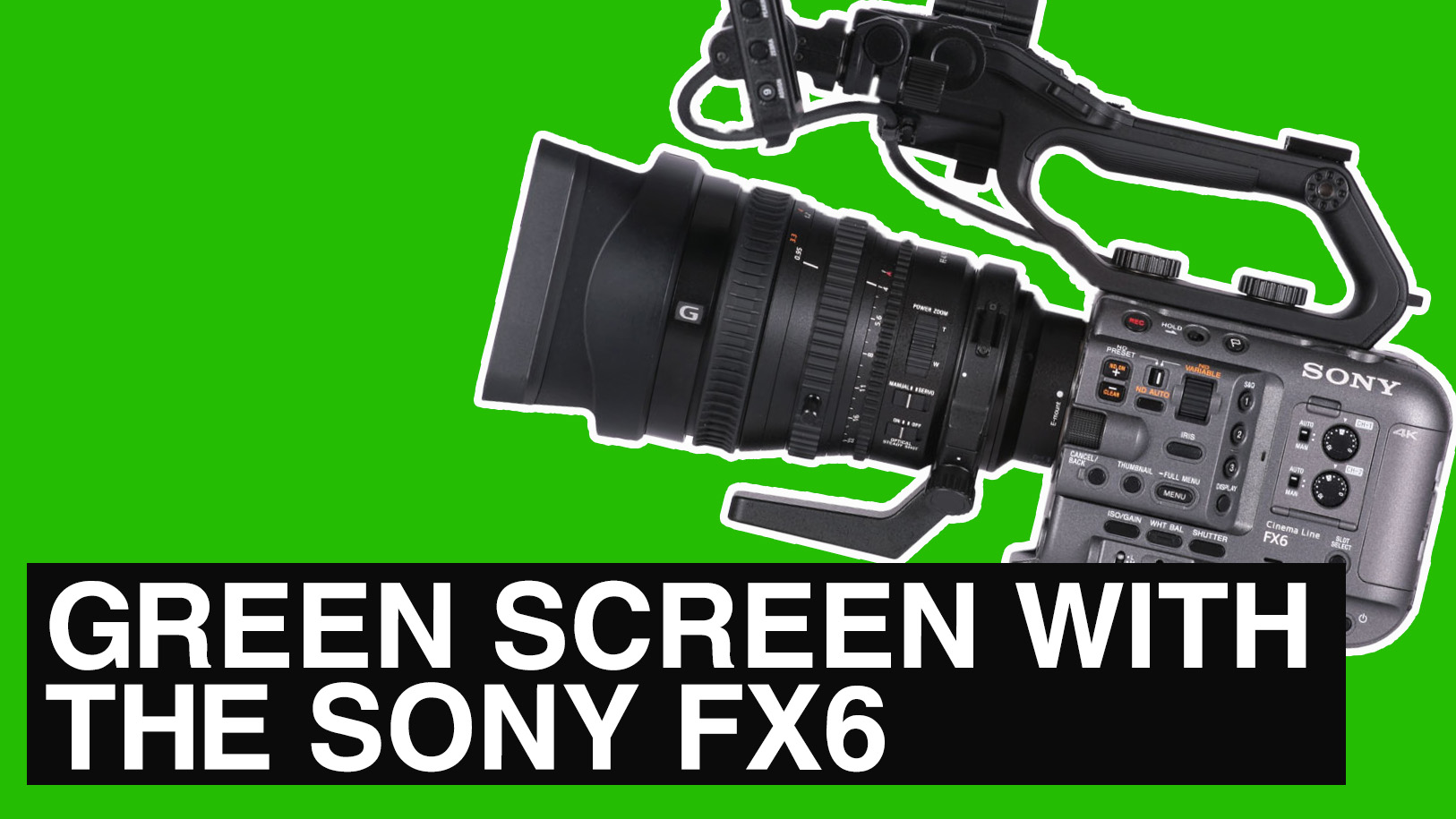A few years ago, whilst we were all in the height of shooting with our FS7s, I wrote blog piece detailing the best settings to use when shooting green screen. It still is one of my most popular articles yet. To follow that up, I thought I’d do quick article to show the best settings for shooting green screen with one of the most popular video cameras at the moment, the Sony FX6.
Now to do this, I’ve set a small pop-up green screen with some basic lighting… key light, back light and fill light for the screen - enough to run this test although I’d usually finesse a little more! I’ve then altered the intensity of the lights to compensate for the exposure change in camera.
In terms of base-line settings, I’m shooting at 4096 x 2160 and XAVC-I (10 bit). I’ve then shot everything at 1/50th shutter speed and 1/100th at a frame rate of 25p. Depending on the action, I sometimes find I get a cleaner key from 1/100th and I can then add back in a bit of motion blur using a plugin (ReelSmart Motion Blur) after I’ve keyed the footage. I’ve shot at both, to get a basic comparison on this.
I’ve then pulled the clips into Premiere Pro, laid on the timeline, for the S-Log 3 clips – I’ve added the official Sony S-Log 3 to Rec 709 LUT, added the Ultra Key effect and selected a colour point close to the hair. I’ve deliberately not altered anything else to enable a better comparison, however, if you were using these settings in real life, you’d spend a little longer finessing them.
So here are the results…
ITU 709 (Rec 709) 1/50th Shutter with Base-Lo ISO
A nice clean key out of the box. Tiny bit of noise in the hair, but could be ironed out with some tweaking.
ITU 709 (Rec 709) 1/100th Shutter with Base-Lo ISO
Again, very clean key straight out of the box. Tiny bit more detail in the hair. Again a tiny bit of noise in the shadows of the hair, but could be ironed out very simply.
ITU 709 (Rec 709) 1/50th Shutter with Base-High ISO
A reasonably clean key. Slight noise in the green of the screen and hair. Could be removed without too much difficulty.
ITU 709 (Rec 709) 1/100th Shutter with Base-High ISO
Again, a reasonably clean. Similar amount of noise in the green and hair, but ever so slightly more definition in the hair. Could be cleaned up easily.
S-Cinetone 1/50th Shutter with Base-Lo ISO
So first up, this looks ever so slightly underexposed… but there’s slightly more noise in this than the previous tests. With some tweaking, perfectly usable, but wouldn’t be my first choice.
S-Cinetone 1/100th Shutter with Base-Lo ISO
Again, slight noise in this. Cleaner hair line. Could be cleaned up easily enough.
S-Cinetone 1/50th Shutter with Base-High ISO
Quite a bit more noise in this. Could be removed but would require a bit of work to get it looking nice.
S-Cinetone 1/100th Shutter with Base-High ISO
Not much difference to the previous example. Quite noisy. Needs some work to make it looking good.
S-Log3 Cine 1/50th Shutter with Base-Lo ISO
Slightly more noisy. Requires a bit more work to remove and clean-up.
S-Log3 Cine 1/100th Shutter with Base-Lo ISO
Again noisy in the shadows and green. Ever so slightly more detail in the hair than the previous example.
S-Log3 Cine 1/50th Shutter with Base-High ISO
Tons more noise in this. Impossible to clean-up without a noise reduction plugin.
S-Log3 Cine 1/100th Shutter with Base-High ISO
Almost unusable. Would be difficult to save this…
What are the best settings for green screen FX6?
So as a top line, I’d tend to suggest sticking with the ITU 709 gamma curve, unless you’re looking to composite the green screen subject into something shot at S-Log3. My suggestion would be to aways have enough light to keep the camera in Base-Low ISO. 1/100th of a shutter does seem to give an ever so slightly more detail in the hairline, but if you’re compositing this with footage shot at 1/50th, I’d try and match that. For me though, I find most green screen footage gets composited in with animation rather than real life footage.
Now with both the S-Cinetone and the S-Log 3 gamma curves, we could add some noise reduction in on camera, which would help reduce that noise a bit. Fundamentally though, we’d never quite get as cleaner key as we could from the ITU 709 curve.
Now for a detailed understanding of the technical aspects of what’s going on here, Alister Chapman has written an interesting article which can be found on his website, but the top line is… Standard Rec 709 have 7/8 stops of dynamic range, which means that all the colour information is spread across those 7/8 stops where as S-Log 3 has 14/15 stops of dynamic range so the colour information is being spread more sparingly.

